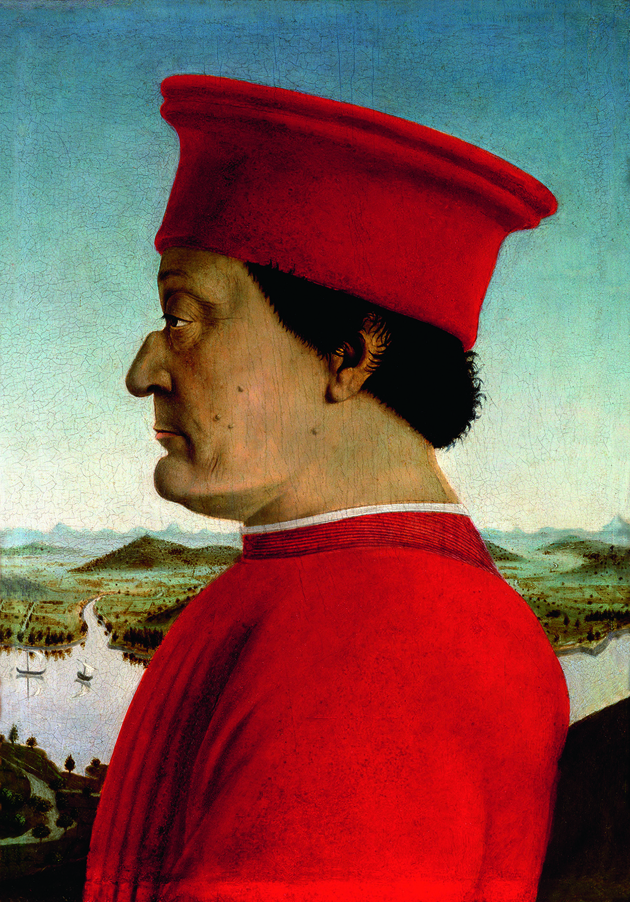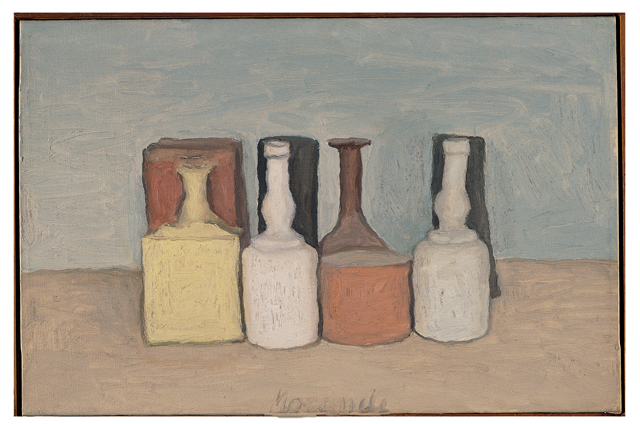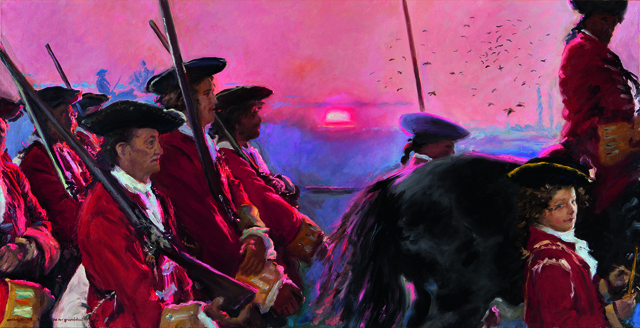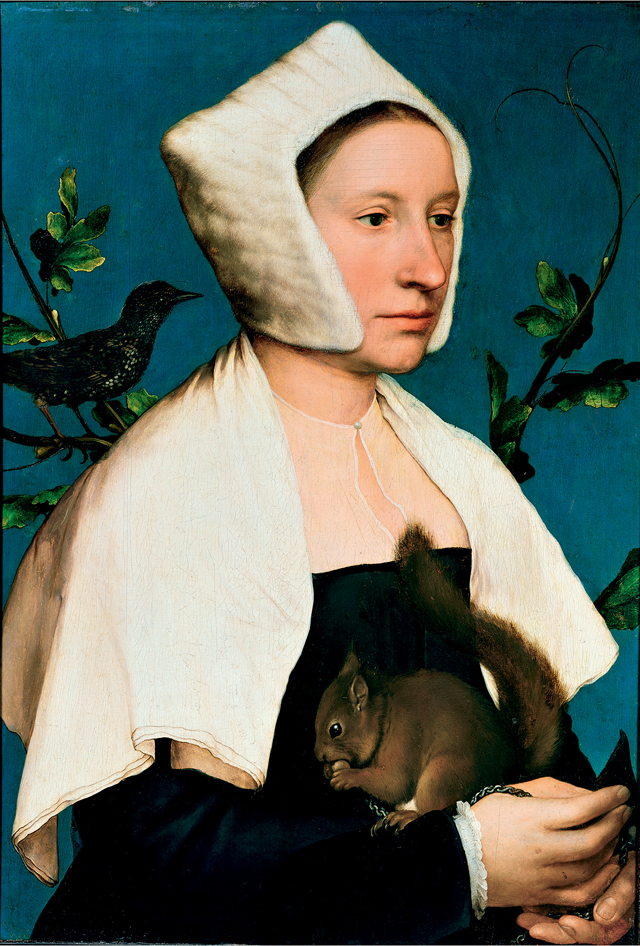My favourite painting: Robert Winston
Robert Winston chooses his favourite painting for Country Life.


Portrait of Federico da Montefeltro, Duke of Urbino, 1472, by Piero della Francesca (about 1415–92), 181⁄2in by 13in, Uffizi, Florence, Italy
Robert Winston says: 'Great paintings are often enigmatic; I celebrate this one because the evocative, brutal, spotty face surrounded by the colour red (the first wavelength perceived by our central nervous system) dominates an enchanting rural landscape. Historians suggest that Federico was always painted from the left side because of losing his right eye in combat. The missing bridge of his nose is mysterious—after the injury, did he have it removed surgically, to retain peripheral vision from his left eye? The puzzling hump-back deformity depicted in various portraits is hardly ever mentioned. Dr Antoni, the New York osteologist, argues this resulted from the weight of his armour. Some neuro-scientists opine that left-dominant portraits are often of individuals unconsciously wishing to show their sensitive side (controlled by the right cranial hemisphere). Perhaps Montefeltro was a bruiser, but he ensured that Urbino was noted for courtesy, refined manners and civilisation.'
Lord Winston, who pioneered IVF, is Professor of Science and Society at Imperial College London.
John McEwen comments: At the time of this portrait, Federico da Montefeltro (1422–82) was the highest paid of condottieri, the professional Italian warlords of that chaotic age. As a scholar, soldier and patron of the arts, he exemplifies the good condottiere and, for all the violence and scheming inseparable from his success, the legacy of his patronage, typified by his sublime palace at Urbino, makes that a reasonable assessment.
Kenneth Clark described the Palazzo Ducale as ‘the only palace in the world I can go round without feeling oppressed and exhausted’. In this, it embodied Federico’s stated priority for a ruler: essere umano, ‘to be human’. Federico’s gentler side can be seen in Pedro Berruguete’s 1481 portrait, which shows him in armour, the garter (from Edward IV of England) on his leg, reading a book, his young son and heir holding on to his father’s knee.
Piero was in his fifties when he first worked for Federico. this portrait, one half of a hinged diptych of the Duke and his Duchess, Battista, mimics the Classical profile of coins and medals. Such profiles conventionally face right, but Federico faces left, possibly to lessen the disfigurement from the jousting injury that cost him his right eye and, most likely, the bridge of his nose.
The picture is painted in oils, a Flemish introduction affording the naturalistic details of the background landscape, its greens today discoloured brown. It may have acted as a portable private memorial to Battista, recently dead, and their marriage. On the reverse of the diptych, they face each other in triumphal chariots.
Sign up for the Country Life Newsletter
Exquisite houses, the beauty of Nature, and how to get the most from your life, straight to your inbox.
This article was originally published in Country Life, January 28, 2015
More from the My Favourite Painting Series

My favourite painting: Penelope Wilton
Penelope Wilton chooses her favourite painting for Country Life.

My favourite painting: Robert Hardy
Robert Hardy chooses his favourite painting for Country Life.

My favourite painting: Neil MacGregor
Neil MacGregor chooses his favourite painting for Country Life.

Credit: Stephen Conroy
My favourite painting: Val McDermid
Val McDermid chooses her favourite painting for Country Life.
Country Life is unlike any other magazine: the only glossy weekly on the newsstand and the only magazine that has been guest-edited by HRH The King not once, but twice. It is a celebration of modern rural life and all its diverse joys and pleasures — that was first published in Queen Victoria's Diamond Jubilee year. Our eclectic mixture of witty and informative content — from the most up-to-date property news and commentary and a coveted glimpse inside some of the UK's best houses and gardens, to gardening, the arts and interior design, written by experts in their field — still cannot be found in print or online, anywhere else.
-
 RHS Chelsea Flower Show: Everything you need to know, plus our top tips and tricks
RHS Chelsea Flower Show: Everything you need to know, plus our top tips and tricksCountry Life editors and contributor share their tips and tricks for making the most of Chelsea.
By Amie Elizabeth White
-
 Hidden excellence in a £7.5 million north London home
Hidden excellence in a £7.5 million north London homeBehind the traditional façades of Provost Road, you will find something very special.
By James Fisher
-
 My favourite painting: Allan Mallinson
My favourite painting: Allan MallinsonMilitary historian Allan Mallinson picks an image of 'faith, generosity and ultimate sacrifice'.
By Charlotte Mullins
-
 My Favourite Painting: Piet Oudolf
My Favourite Painting: Piet Oudolf'One cannot sense whether he is far out on the ocean or closer to shore, or what he may be watching or feeling in that moment as he stares towards the beach.’
By Country Life
-
 My Favourite Painting: Mary Plazas
My Favourite Painting: Mary Plazas'There is compassion, awe, humility, a knowing yet a questioning in the glistening eyes. It moves me, it inspires me beyond the need to know.’
By Country Life
-
 My favourite painting: Robert Kime
My favourite painting: Robert KimeRobert Kime shares his fondness for New Year Snow by Ravilious
By Country Life
-
 My Favourite Painting: Anna Pavord
My Favourite Painting: Anna PavordAnna Pavord chooses a picture which reminds her of where she grew up
By Country Life
-
 My favourite painting: The Duchess of Wellington
My favourite painting: The Duchess of WellingtonThe Duchess of Wellington chooses her favourite painting for Country Life.
By Country Life
-
 My favourite painting: Maureen Lipman
My favourite painting: Maureen LipmanMaureen Lipman chooses her favourite painting for Country Life.
By Country Life
-
 My favourite painting: Jacqueline Wilson
My favourite painting: Jacqueline Wilson'I looked at this painting and decided to write about a Victorian circus girl one day'
By Country Life